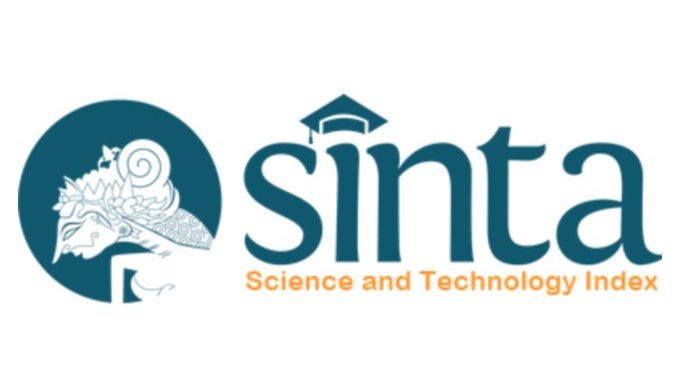Peranan Status Antioksidan pada Abortus Spontan
DOI:
https://doi.org/10.55175/cdk.v50i1.338Keywords:
Abortus, antioksidan, stres oksidatifAbstract
Abortus merupakan masalah obstetrik yang merupakan salah satu penyebab kematian ibu dan janin. Perdarahan atau ancaman abortus pada trimester pertama terjadi pada sekitar 20% sampai 25% wanita hamil, dengan 50%-nya akan berakhir sebagai abortus spontan. Beberapa penelitian mengindikasikan terjadinya stres oksidatif pada abortus spontan. Stres oksidatif yang disebabkan oleh penurunan kadar antioksidan dapat memengaruhi sistem imun ibu, sehingga mengalami pergeseran dominasi sistem imun Th2 ke Th1 yang menyebabkan abortus; menunjukkan stres terhadap sinsitiotrofoblas dan kerusakan jaringan plasenta dengan bukti morfologis dan imunohistokimia, yang berkontribusi terhadap risiko kegagalan kehamilan awal. Kadar antioksidan yang tidak adekuat meningkatkan risiko abortus spontan. Abortion is an obstetric problem that may cause maternal and fetal death. Bleeding or threat of abortion in first trimester occurs in 20% to 25% pregnancy and 50% will end up as spontaneous abortion. Some studies indicate oxidative stress occurs in spontaneous abortion. Oxidative stress caused by a decrease in antioxidant levels can affect mother’s immune system, making a shift in the dominance of the Th2 to Th1 immune system that causes abortion. Oxidative stress contributes to early pregnancy failure, by showing a marked increase in oxidative stress to syncytiotrophoblasts and damage to placental tissue with morphological and immunohistochemical evidence. Inadequate levels of antioxidants are likely to induce spontaneous abortion.
Downloads
References
Husin F. Asuhan kehamilan berbasis bukti. Jakarta: Sagung Seto; 2011 .pp. 15-28.
Gupta S, Agarwal A, Banerjee J, Alvarez JG. The role of oxidative stress in spontaneous abortion and recurrent pregnancy loss: A systematic review. Obstetr. Gynecol. Survey 2007;62(5):335–47.
Ramandeep K Kapil G, Harkiran K. Correlation of enhanced oxidative stress with altered tyhroid profile: Probable role in spontaneous abortion. Int J Appl Basic Med Red. 2017;7(11):20-5.
Agarwal A, Mellado AA, Premkumar BJ, Sharman A, Gupta S. The effects of oxidative stress on female reproduction: A review. Endocrinology 2012;10:1-31.
Liu L, Keefe DL. Cytoplasm mediates both development and oxidation-induced apoptotic cell death in mouse zygotes. Biomol Reprod. 2010;62:1828-34.
Barrington JW, Lindsay P, James D, Smith S, Roberts A. Selenium deficiency and miscarriage: A possible link? Br J Obstet Gynaecol. 2013;103:130 – 2.
Jauniaux E, Watson AL, Hempstock J, Bao Y, Skepper JN, Burton GJ. Onset of maternal arterial blood flow and placental oxidative stress: A possible factor in human early pregnancy failure. Am J Pathol. 2010;157(6):2111 – 22.
Cheeseman KH, Slater TF. An introduction to free radical biochemistry. Br Med Bull. 2013;49:481-93.
Barnea ER, Kirk D, Paidas MJ. Preimplantation factor (PIF) promoting role in embryo implantation: Increases endometrial integrin-alpha2beta3, amphiregulin and epiregulin while reducing betacellulin expression via MAPK in decidua. RBEJ. 2012;10:50.
Marseglia L, D'Angelo G, Manti S, Arrigo T, Barberi I, Reiter RJ, et al. Oxidative Stress- Mediated Aging During the Fetal and Perinatal Periods. Oxid Med Cell Longev. 2014:358375.
Wang S, He G, Chen M, Zuo T, Xu W, Liu X. The role of antioxidant enzymes in the ovaries. Hindawi Oxidative Medicine and Cellular Longevity 2017;4371714:1-14. https://doi.org/10.1155/2017/4371714
Agarwal A, Mellado AA, Premkumar BJ, Sharman A, Gupta S. The effects of oxidative stress on female reproduction: A review. Endocrinol. 2012;10:1-31.
Ozkaya O, Sezik M, Kaya H. Serum malondialdehyde, erythrocyte glutathione peroxidase, and erythrocyte superoxide dismutase levels in women with early spontaneous abrotions accompanied by vaginal bleeding. Med Sci Monit. 2008;14(1):47-51.
Abdul-Barry J, Al-Rubai SA, Qasim QA. Study of oxidant-antioxidant status in recurrent spontaneous abortion. Thi-Qar Medical J. 2012;5(1):35-46.
Safarnavadeh T, Rastegarpanah M. Anioxidants and infertility treatment, the role of satureja khusztanica: A mini-systematic review. Iran J Reprod Med. 2011;9(2):61-70.
Sami AS, Suat E, Alkis I, KarakusY, Guler S. The role of trace element, mineral, vitamin and total antioxidant status in women with habitual abortion. J Maternal-Fetal Neonatal Med. 2021;34(7):1055-62. doi: 10.1080/14767058.2019.1623872.
Abdul-Barry J, Al-Rubai SA, Qasim QA. Study of oxidant-antioxidant status in recurrent spontaneous abortion. TQMJ. 2011;5:35-46.
Сhulovska ZІ, Drapak І, Chaban TI, Matiychuk VS, Chaban IG, Ogurtsov V. Synthesis and primary screening of the antioxidant activity of some 4-thioxo- and 4-iminothiazolidin- 2-ones. Farmatsevtychnyi zhurnal. 2021;(1):17–25.
Downloads
Published
How to Cite
Issue
Section
License

This work is licensed under a Creative Commons Attribution-NonCommercial 4.0 International License.





















